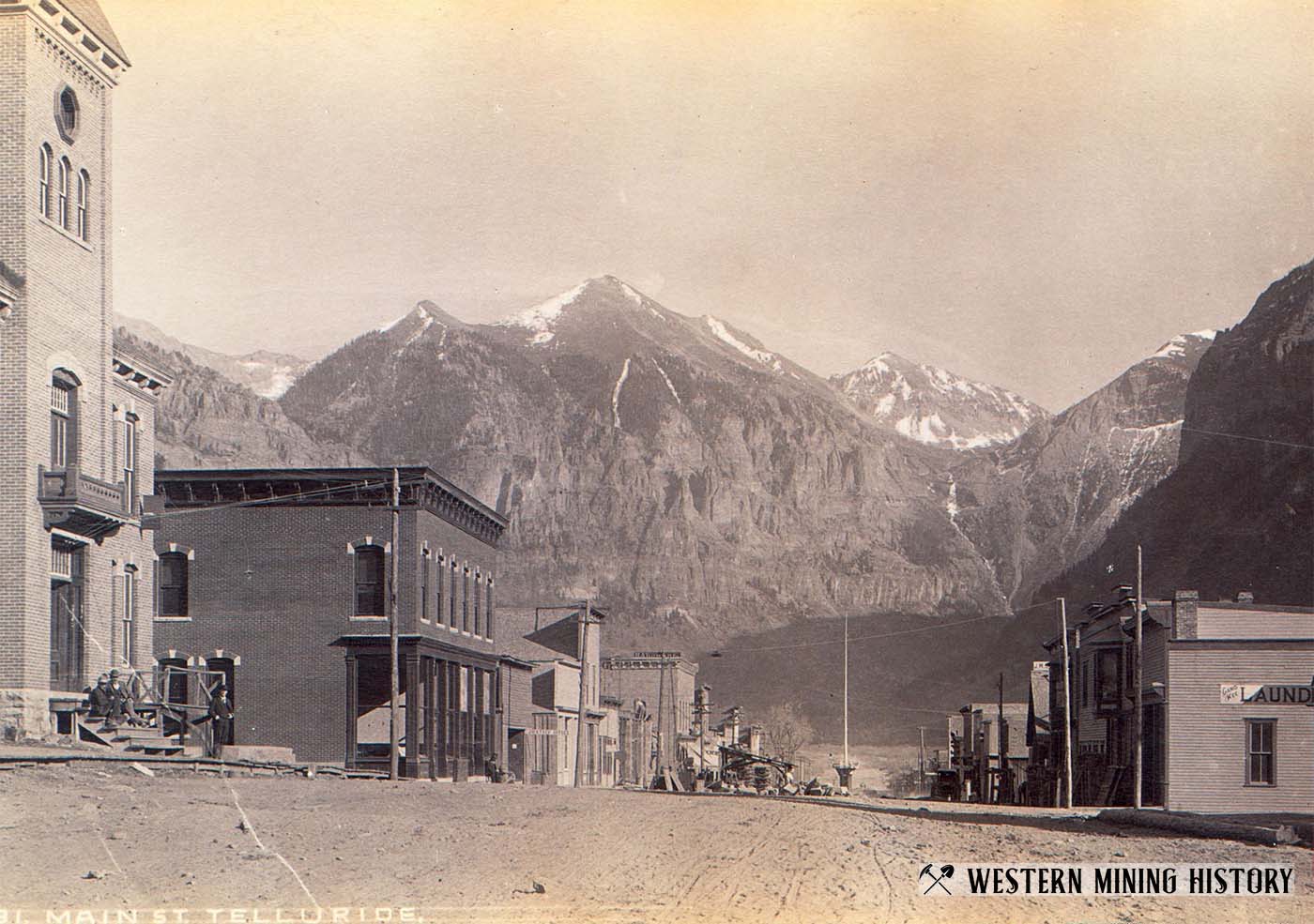Telluride History
The town of Telluride, located in a magnificent box canyon on the headwaters of the San Miguel River, owes it existence to quartz lead discoveries that were made starting in 1875. What is less known however, is that prospectors had been working gold placers in the area as early as 1873.
Early History
In September of 1873 a group of four men were reportedly the first prospectors to enter the area. A September 15, 1899 article from The Daily Journal (Telluride) described that first expedition:
Lon Remine, Dick Irwin, Wm. Robinson and Wm. Rutip came on to the San Miguel river by way of the South Fork of the Gunnison, crossing the Dallas Divide and coming up the San Miguel river as far as the junction of the South Fork. They camped there a few days, prospecting in the gravel beds at or near that point, finding some coarse gold. They also visited Trout Lake and did some fishing. At this time they stayed about a month and then went back to Rosita for the winter.
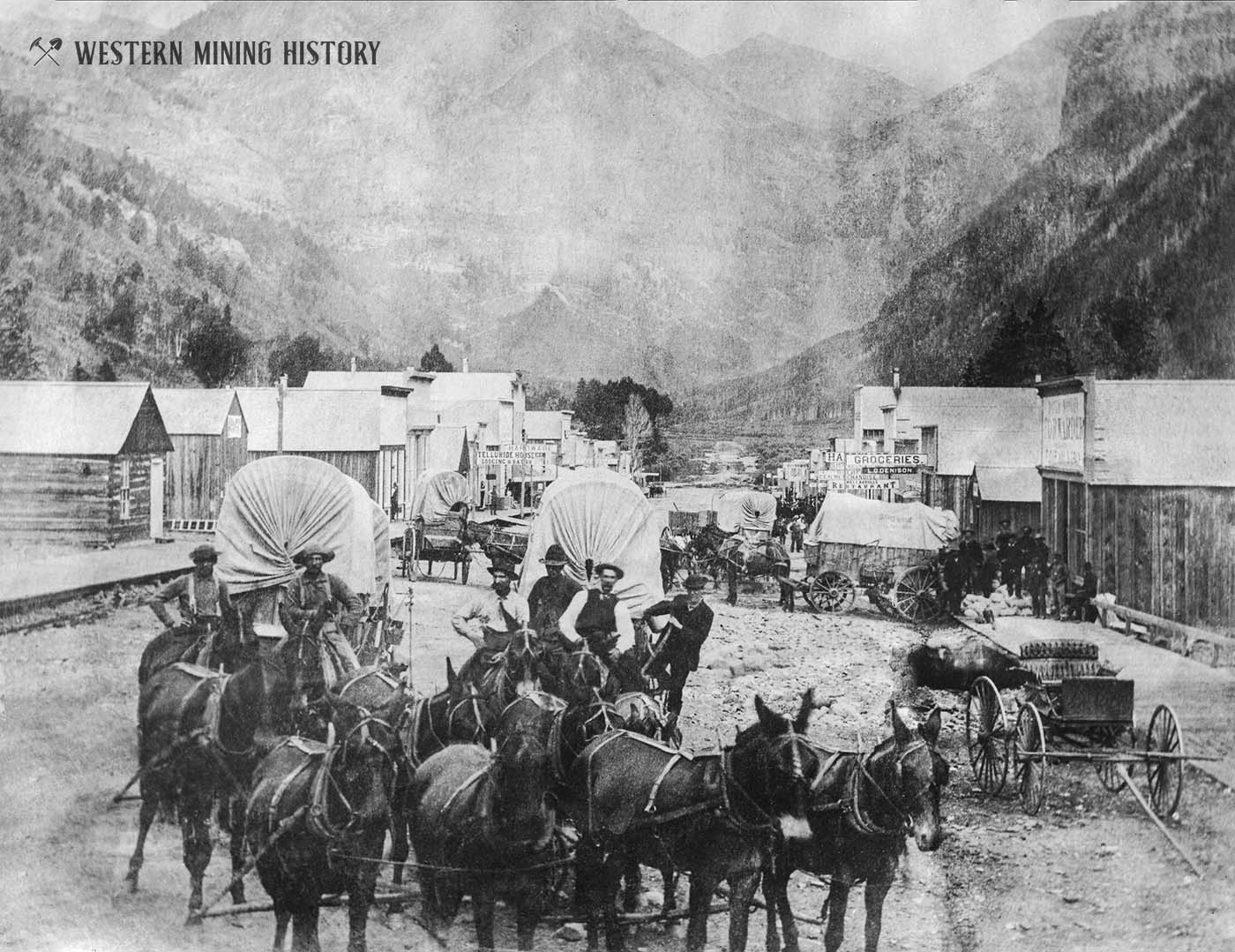
In the summer of 1874 Lon Remine and Wm. Remine came over to the San Miguel from Silverton and did further prospecting along the San Miguel river. The prospecting was for placer mines. They put in a box on the Keystone hill and washed some during the summer, being able to take out about ten dollars a day when they both worked. They brought their supplies from Silverton. Flour there at that time was worth ten dollars per 50 pounds.
In the summer of 1874 Lon and Wm. Remine located what is now known as the Keystone placer. In 1874 after Lon had built his dugout at the entrance to the park, he was joined by John Eddy and a man by the name of Roache, who also built a dugout near by, and the three spent the winter of 1874 in the park. Mountain sheep were plentiful during the winter along the bluffs of the river and fishing in the stream was good. Thus the winter of 4 was passed by the three white men who first passed a winter on the San Miguel.
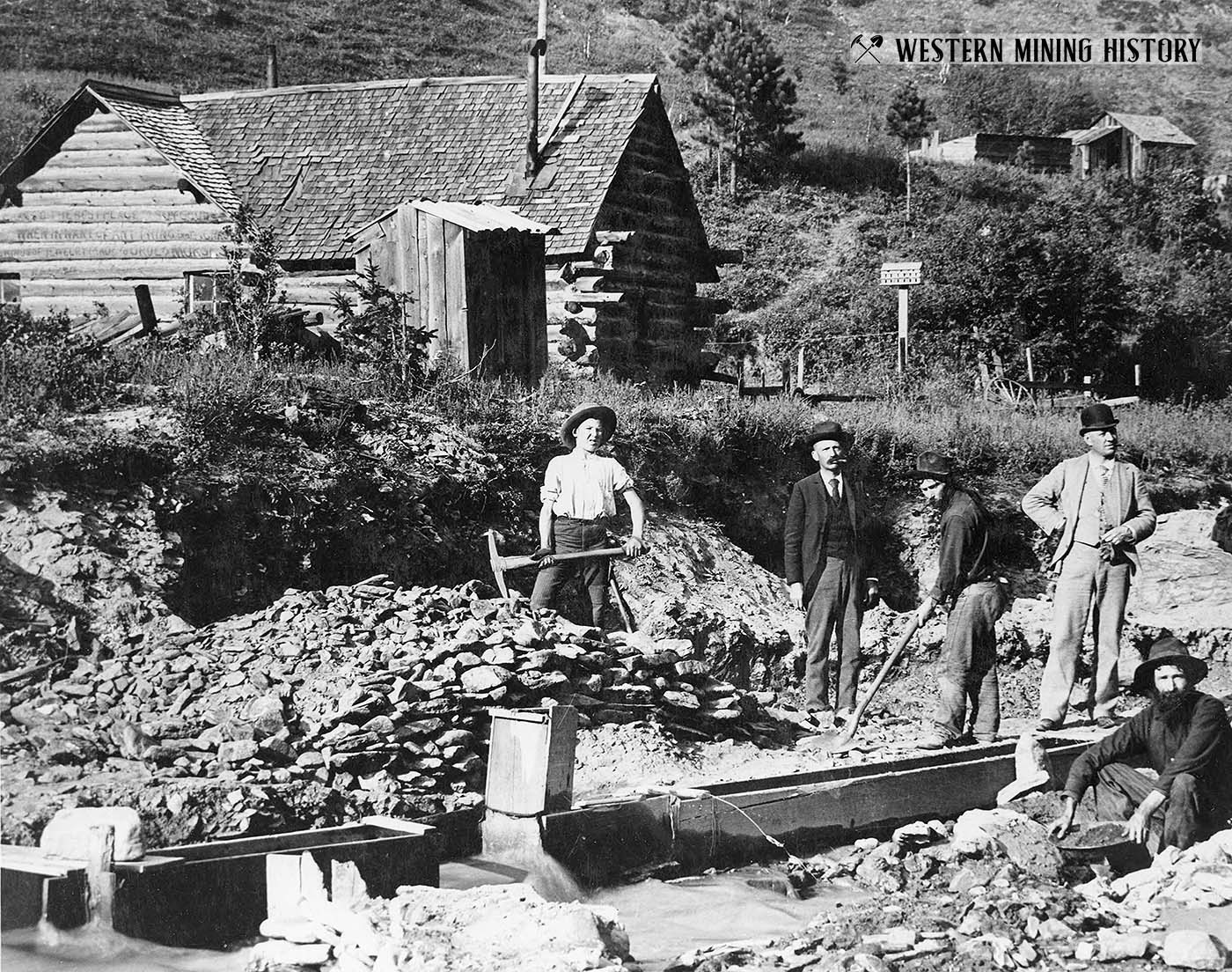
More men came in during the year 1875, and prospecting along the gravel banks of tributaries of the river was quite brisk during the summer of 1875. In the fall and winter of '75 and '76, the news of the good gold prospects was carried to outside points, and in the spring of 76 the rush was quite considerable, bringing in many adventuresome men from Del Norte, Rosita and other mining camps of the state.
The passages above provide clues as to where the first prospectors established a crude settlement. While the Keystone placer mine is not in the USGS database, it is almost certainly near the spot now known as Keystone Hill, where highway 145 splits and the spur heads east to Telluride.
Also of note is that Telluride was not the first settlement in the area. The town of San Miguel was the first town, having a post office in 1877. Nothing is left of the original town, which was located where the San Miguel Country Store is now located, just west of Telluride. Ophir, which established a post office in 1878, also predates Telluride.
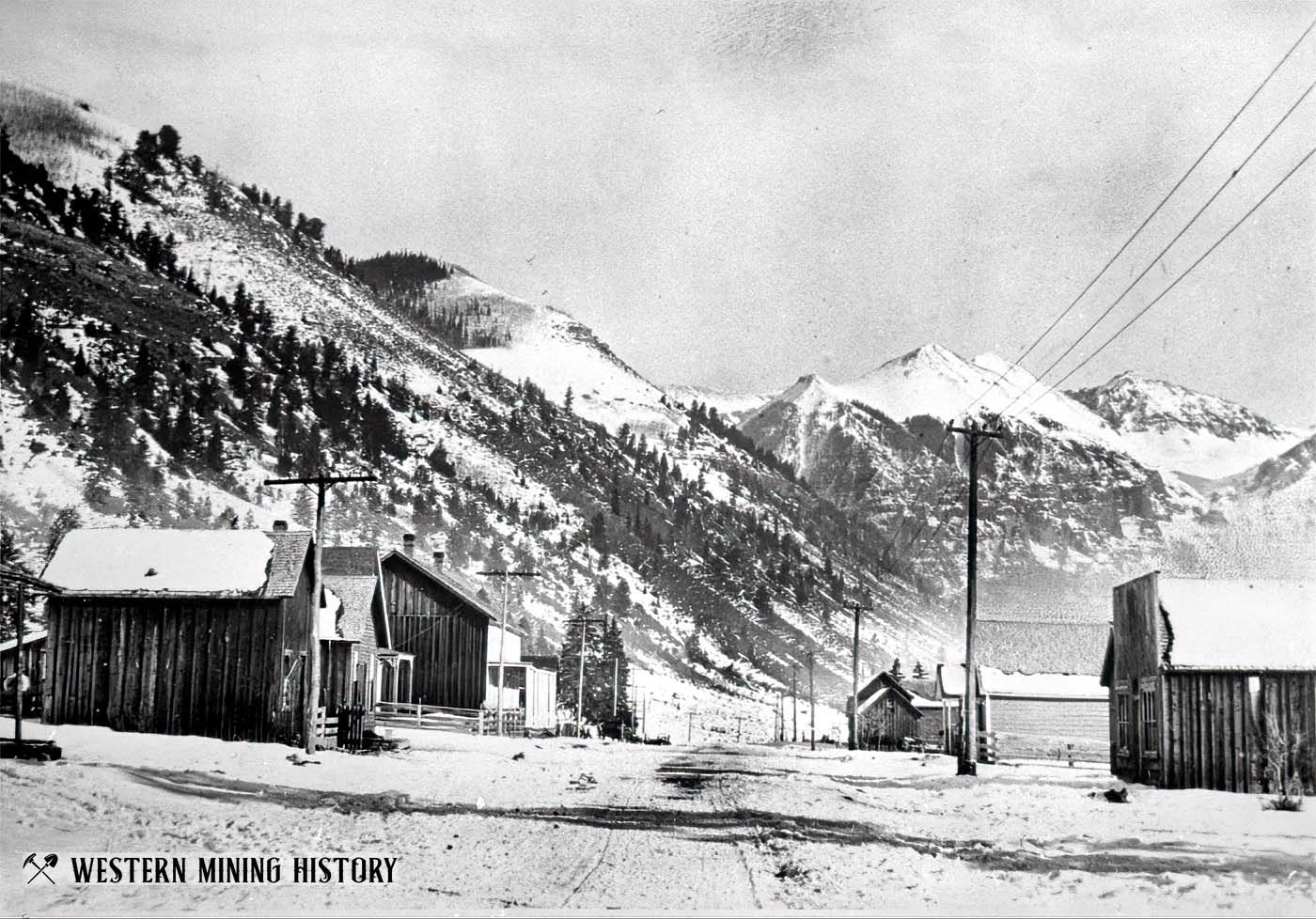
The Founding of Telluride
John A. Fallon is credited with the first discovery of a quartz lead–the Sheridan vein of the smuggler mine–located high above the valley in Marshall Basin. Soon other quartz leads were located, and interest in mining began to shift from placer to lode. A settlement west of San Miguel, closer to the lode mines, began to form in 1878.
The earliest history of the town of Telluride is difficult to discern, but some sources state the first settlement was founded in 1878 under the name Columbia. The name appears to have changed to Telluride in 1880 when the first post office was established, although there is some confusion with the name. Newspaper articles continued to call the town Columbia at least until 1882, with one noting "Columbia, known as Telluride (that being the name of the post office)."
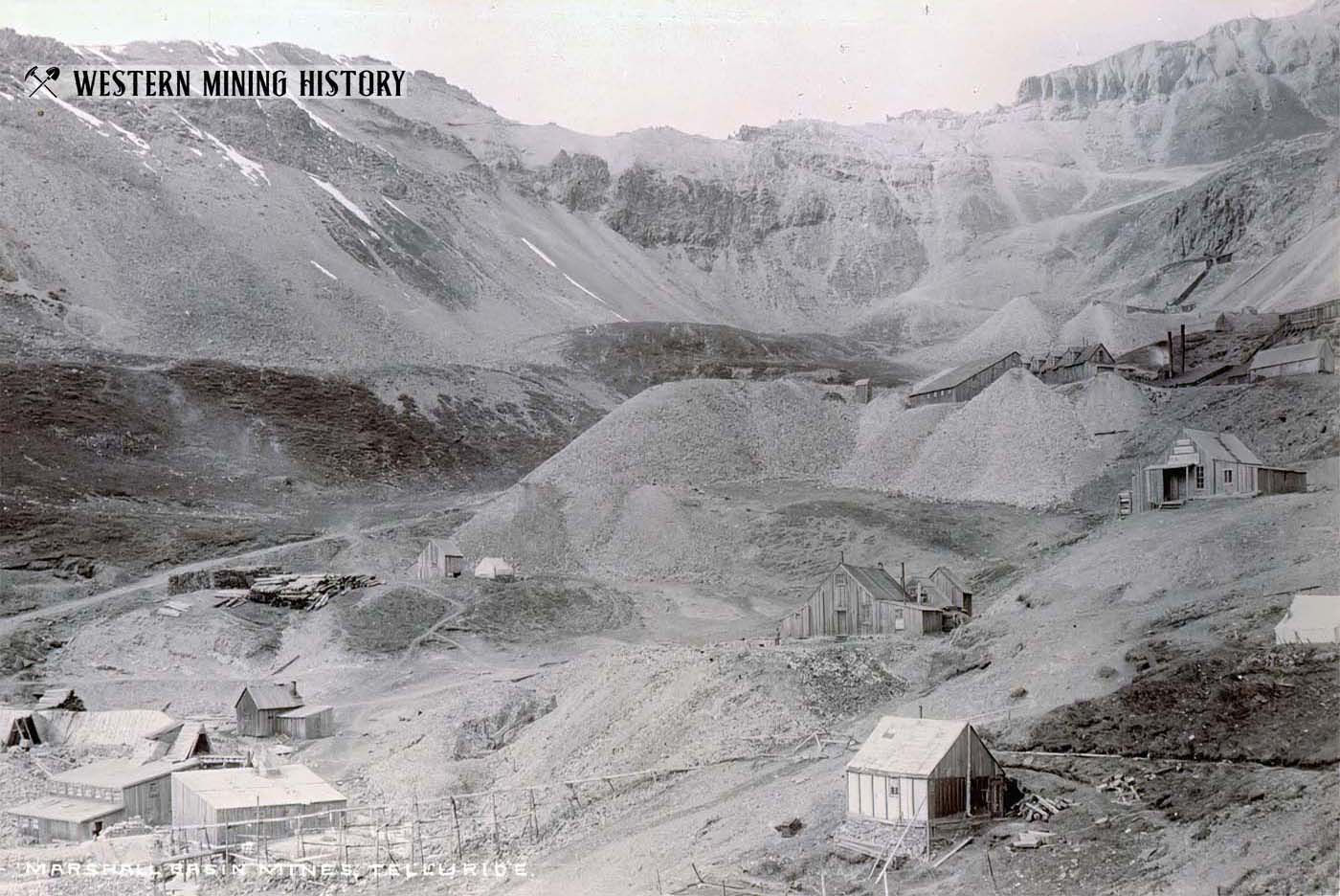
The name "Telluride" was likely chosen due to the excitement that was happening in Boulder County at the time as belts of rich telluride ores were being discovered there. Promoters of new towns often wanted to be associated with some boom or excitement that was making headlines, which is likely the reason Telluride was chosen despite the area not being known for that type of ore.
In September 1880, Fallon sold his Sheridan claim to "California Parties" for $75,000. Despite rich mines being discovered and interest growing from outside capital, the town grew slowly due to its very remote location and lack of roads. The first road entered the valley in 1881, which spurred the growth of both town and mines.
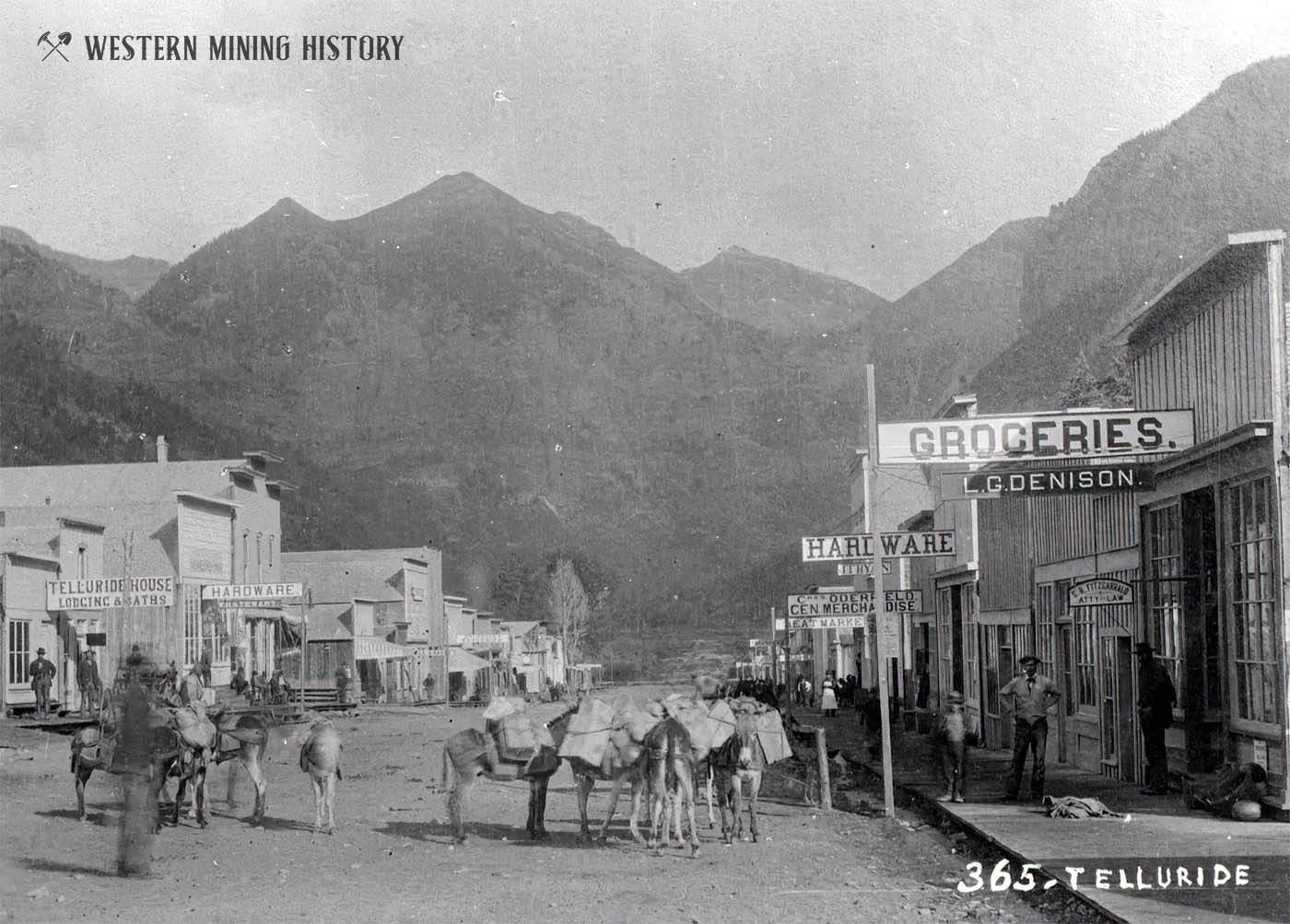
The first newspaper, the Journal was established in San Miguel in the summer of 1881, but moved to Columbia that same year. This was the year that the first church services were offered, and a school was established for the children of the town. In 1883 San Miguel became a county, and Telluride the seat of government.
Although the district was remote and had poor transportation infrastructure, the mines were rich and the area developed rapidly despite the difficulties. An article from May 1882 stated: "Freighting has assumed enormous proportions in the San Miguel country. An average of 100,000 pounds of freight alone per month has been discharged and received at the three towns, San Miguel, Columbia, and Pandora during the several months past."
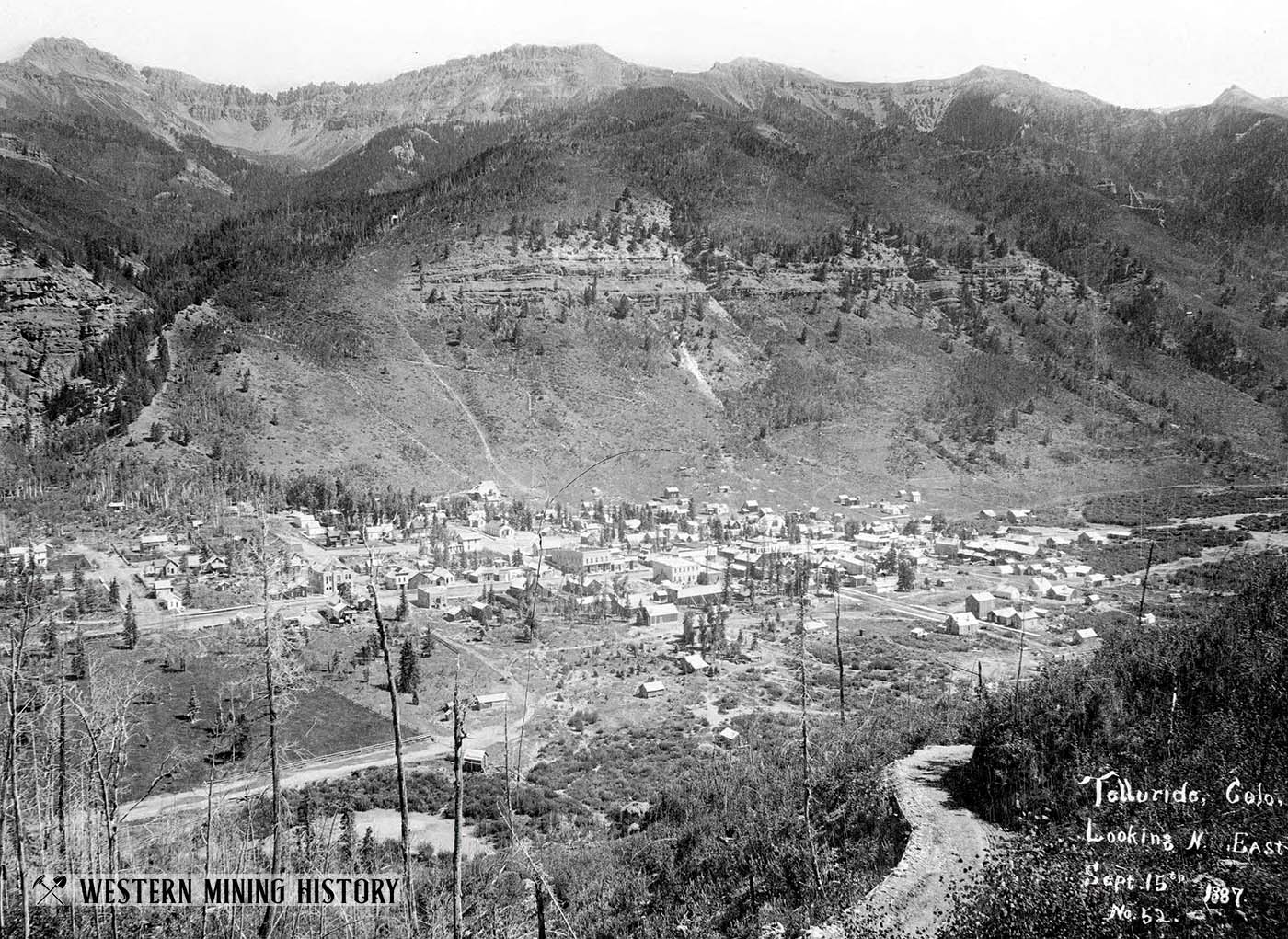
A rail link was many years from becoming a reality, but the district, and the city of Telluride, experienced healthy growth nonetheless. By the late 1880s, Telluride, together with neighboring communities Pandora and San Miguel, and surrounding mines had in total a population of around a 2,000 people.
Butch Cassidy, along with three other members of the Stockton gang, robbed the San Miguel National Bank in Telluride On June 24, 1889. This was Cassidy's first bank job, and he was not a famous figure at the time so the event did not make the news to the degree his later exploits would. The estimated $20,000 they stole was never recovered.
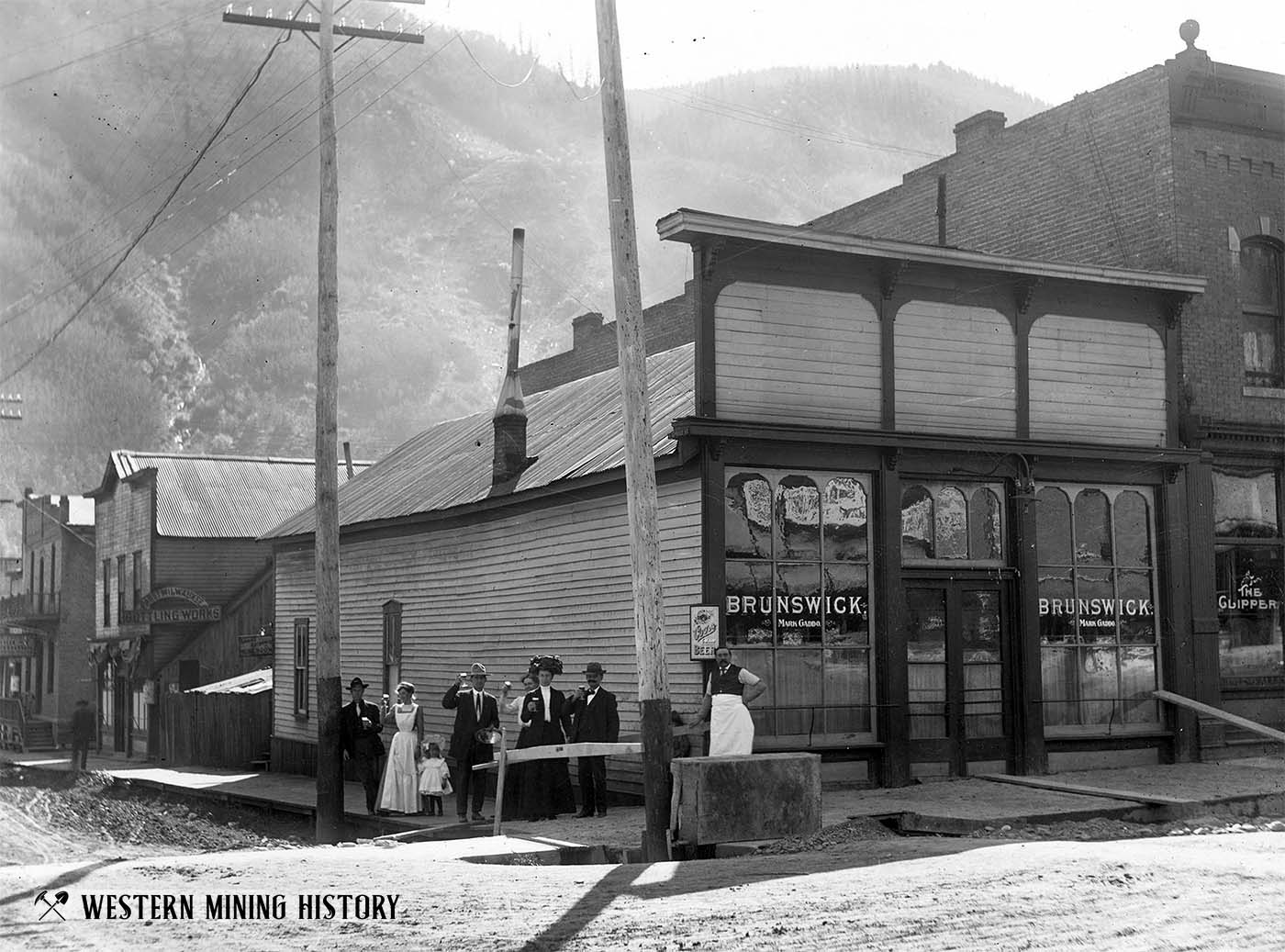
One of the Nations Top Mining Districts
The Rio Grande Southern Railroad, built by legendary Colorado road builder Otto Mears, finally linked the town to the outside world late in 1890. The population of the town rapidly increased, reportedly to more than 5,000 people by 1893, but the town's new found prosperity was about to experience a harsh dose of reality.
The silver crash of 1893 sent Colorado's many silver mining districts into a depression. Although Telluride's brief period of staggering growth was cut short by the crash, it weathered the trouble better than other districts. Silver was an important commodity from the area's mines, but gold and other minerals were also abundant. The local mining industry found itself back on its feet much faster than in other parts of the state.
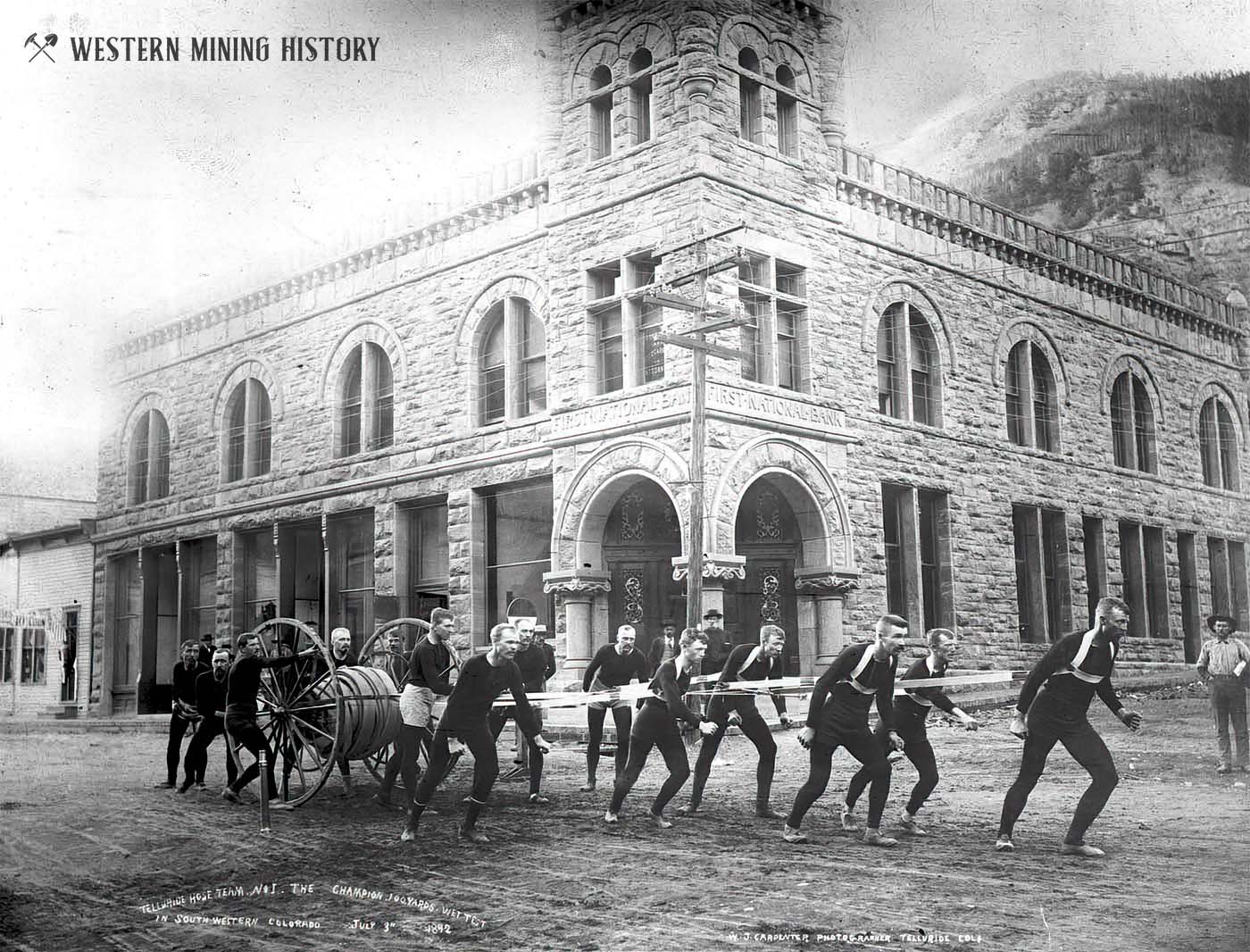
Gold production increased rapidly after the silver crash, doubling between 1894 and 1895. The mines of Telluride were once again thriving, even while other districts in the state would stagnate for several more years. By the late 1890s, a wave of consolidation resulted in larger scale mining operations than were previously possible, and gold production once again dramatically increased. A report from the USGS gives an overview of the important mines of the area during this period:
Since 1898, the large output of the Telluride district has come chiefly from the mines of three large companies the Liberty Bell, Smuggler-Union, and the Tomboy. The Liberty Bell mine, which produced only silver and gold, was operated from 1898 to 1921 and during that period had an output of 633,021 ounces of gold. The Tomboy group of mines closed in 1927 and the Smuggler-Union closed in 1928 after operating 52 years.
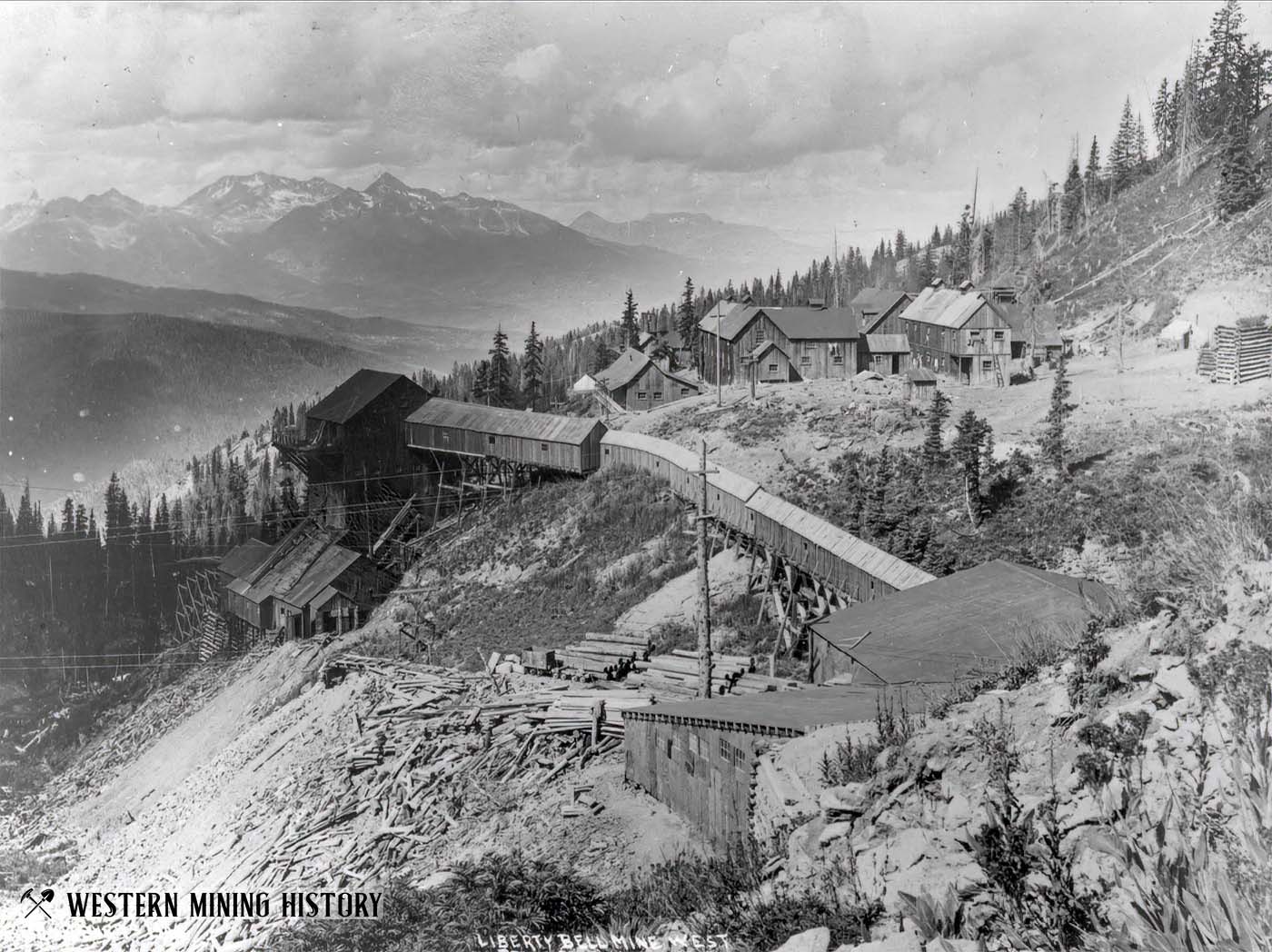
In 1940 the Smuggler-Union group of mines and the Tomboy holdings were organized as the Telluride Mines, Inc., which was still active in 1959. Total production of gold through 1959 was at least 3 million ounces; thus Telluride is one of the 25 leading gold-producing districts in the United States. Large quantities of silver, lead, zinc, and copper have also been produced.
A notable dark period from Telluride's past occurred late in 1903 as the area was one of the focal points of the Colorado Labor Wars that rocked the state's mining industry and the communities that served them. Telluride was one of the towns that was occupied by the military for several months while the violent conflicts between miners and mining companies unfolded.
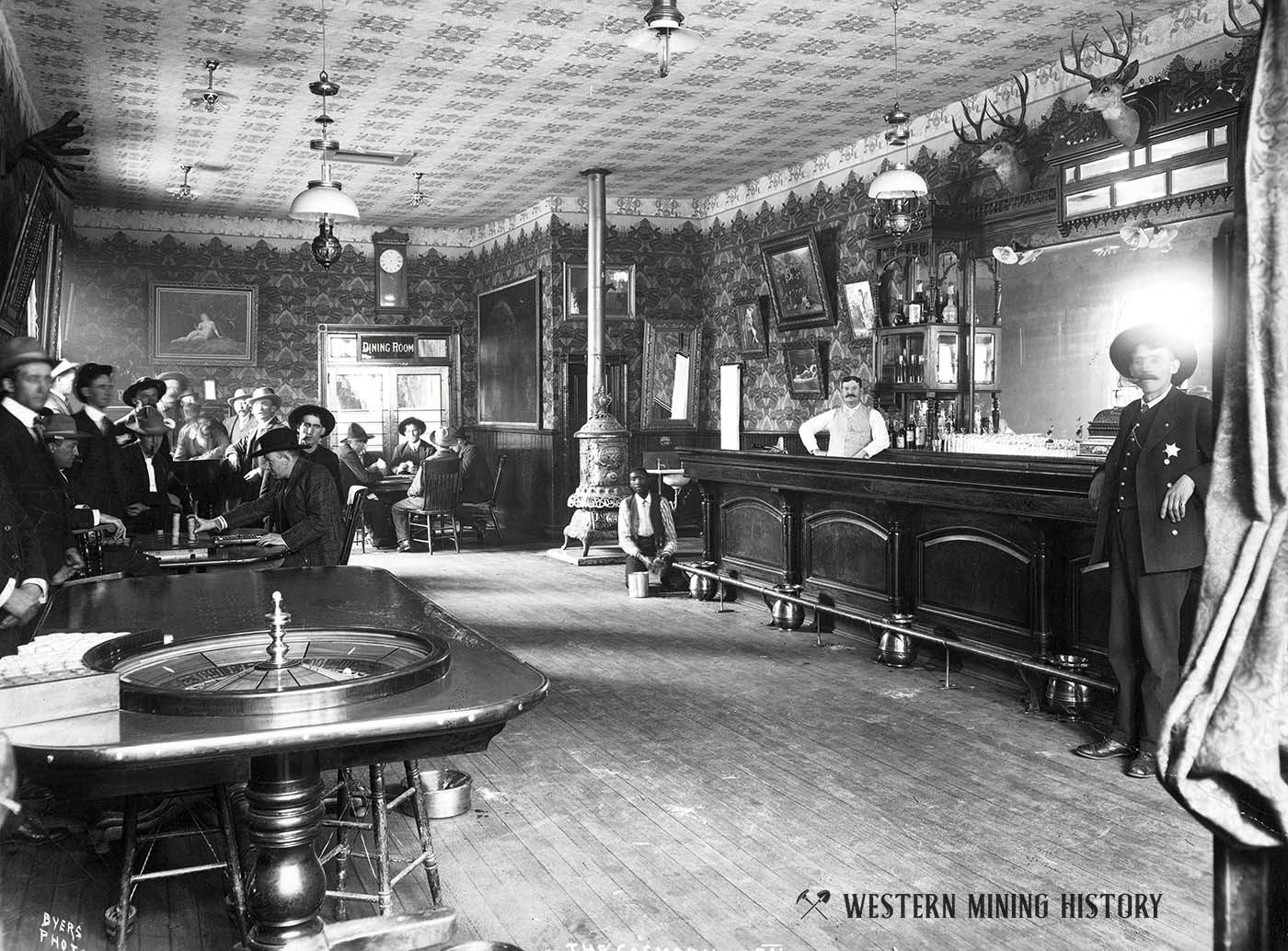
Modern Telluride
In the 1970’s as the last mining waned, Telluride redefined itself as a ski town. Despite the cycles of boom and bust, the town retains its original Victorian charm. Its status as a national historic district since 1961 has helped protect Telluride from awkward modernization with about 300 buildings remaining from the original boom times. The New Sheridan Hotel, built in 1895, still offers drinks in their well preserved, originally furnished, bar.
The Telluride Historical Museum tells the history of San Miguel County, including a geology exhibit, a mining exhibit, and other relevant details of local lore. The museum is housed in the restored downtown 1893 miners' hospital.
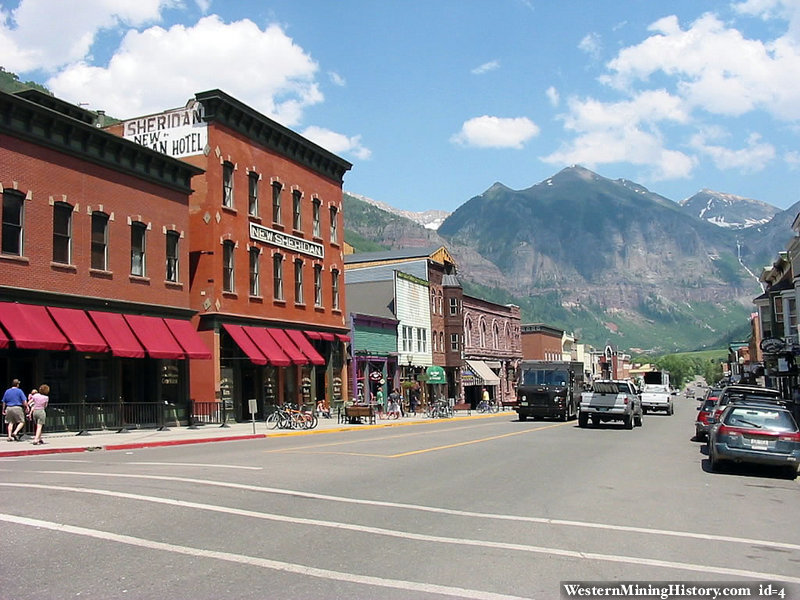
The historic Telluride Lone Tree Cemetery sits at the uphill edge of town. It includes many historic gravestones. The local museum leads guided tours of the cemetery on Friday evenings during the summer.
Telluride Newspaper Advertisements From 1896
Historical newspapers are one of the best sources of information on what life was like in mining camps of the Old West. This post contains ads from The Daily Journal of Telluride, Colorado – April 18, 1896 edition.
This advertisement for the Sheridan Hotel announces new management under “Captain W.S. Walker”, touts modern conveniences like electric lights and steam heat, and offers “Special Family Rates” and “Bus to and from all trains”.
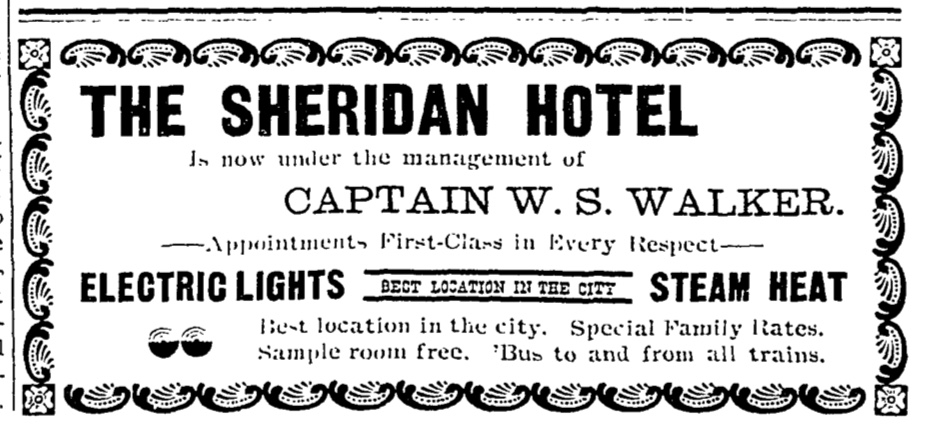
The Sheridan Hotel was originally built in 1891 and burned down in 1894. The “New Sheridan” opened in 1895 and still operates today – over 120 years later.
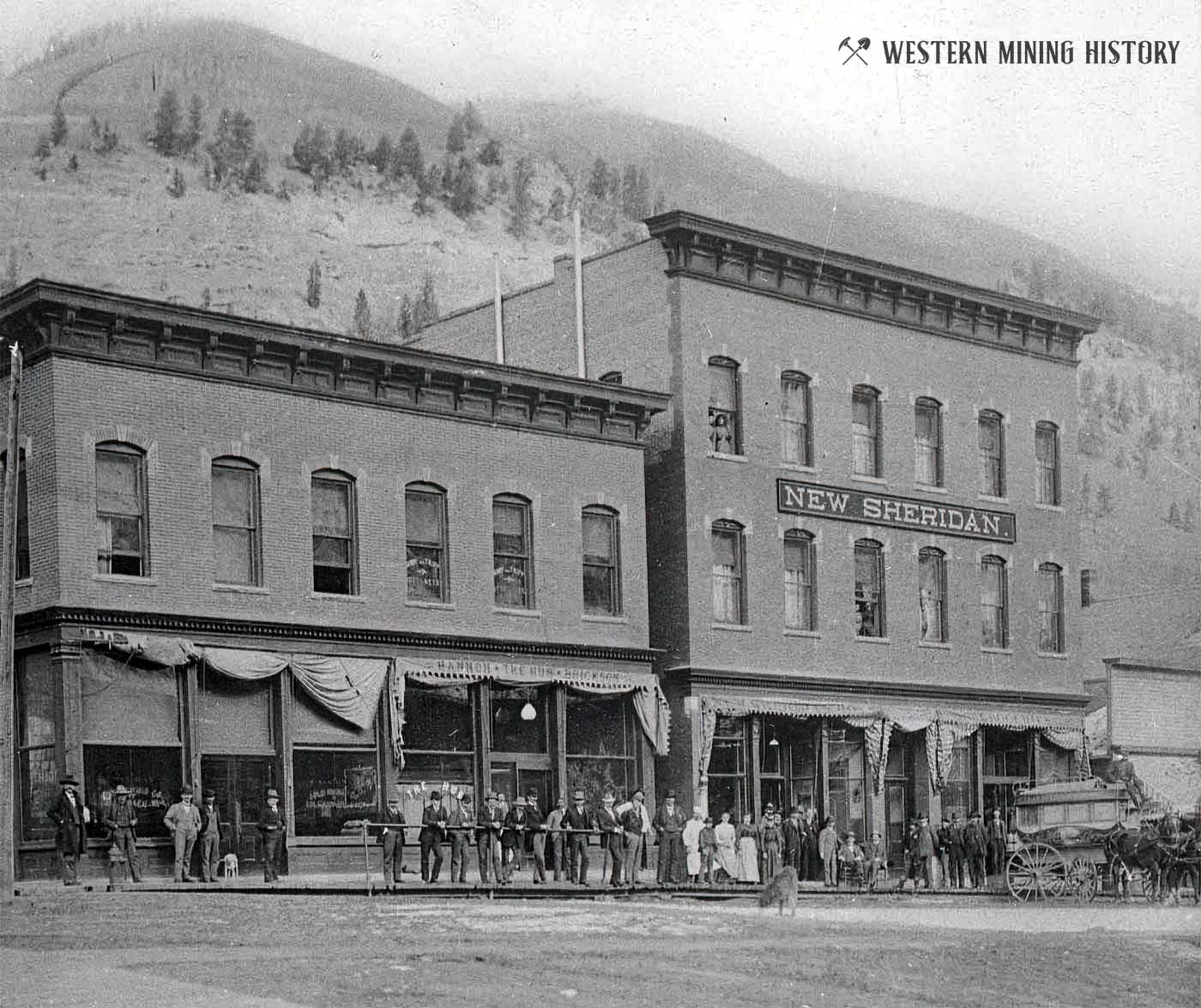
Restaurants of the day did plenty of advertising to attract hungry customers. This ad claims that the Metropole Restaurant is “The only first-class restaurant in the city” and offers luxuries such as oysters and fish at the rate of 35 cents for lunch and 50 cents for dinner.
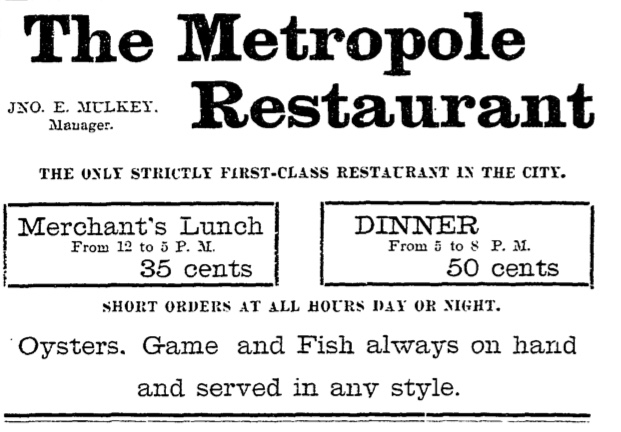
Optimistic mining brokers Painter & Rohwer of Telluride conclude that you are looking for an investment in mining. They claim that “The gold fields of San Miguel County are becoming extensively known, and are proving to be of greater value every week”.
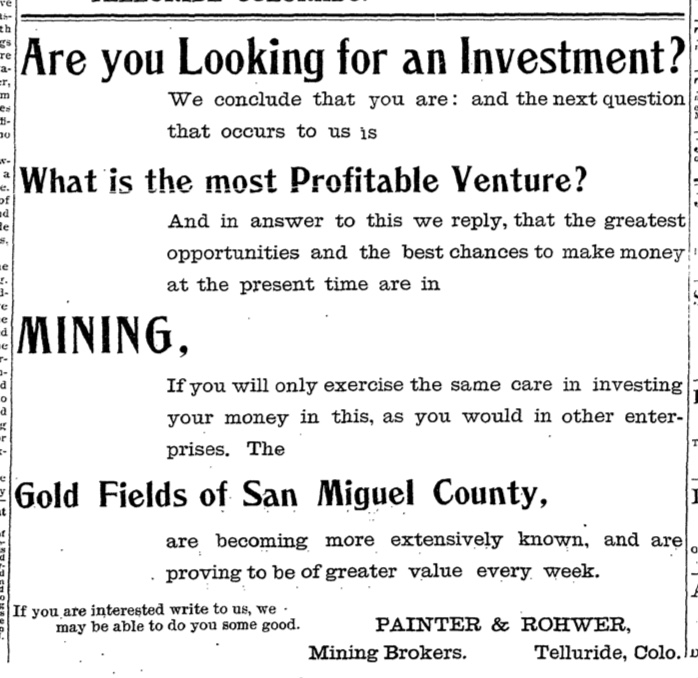
Distant companies advertised their goods in local mining camps like this ad for wool suits from the Oregon Woolen Mill Company. Who needs proper spelling when advertising “the best tailor-madd suits ever sold in Telluride” when you include a little humor: “No X rays needed to detect the suits made by The Oregon Woolen Mill Co.”.
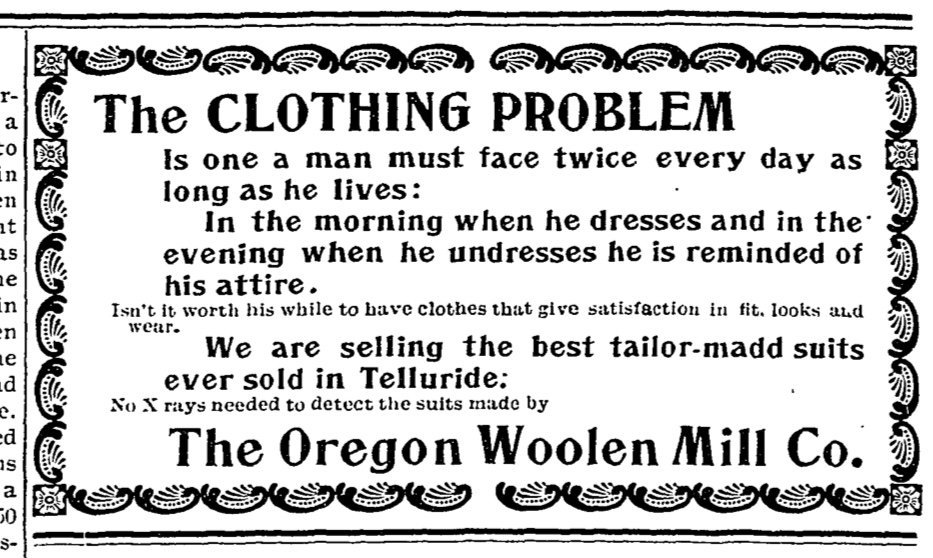
Nearby Ghost Towns
The city of Telluride served as the commercial and social hub of many important mines and districts. Those districts were the locations of smaller, yet still historically Significant mining towns, many of which can still be visited today.
The ghost town of Pandora, just east of Telluride, is so close to town that it feels like part of Telluride itself. Pandora was named for the Pandora Mine but the Smuggler-Union Mine turned out to be the real money maker. That giant mine built its floatation mill in Pandora and operated the mill into the 1970s.
The Tomboy Road is a challenging, narrow, unmaintained, sometimes harrowing road heading out of Telluride. It heads easterly four miles to the famous Smuggler-Union Mine site and the town of Smuggler which housed the hundreds of miners working at the mine. Some of the ruins have literally slid down the mountainside but an impressive crusher house as well as a couple of boilers sitting on a concrete foundation still mark the site. The gated entrance tunnel is also still visible.
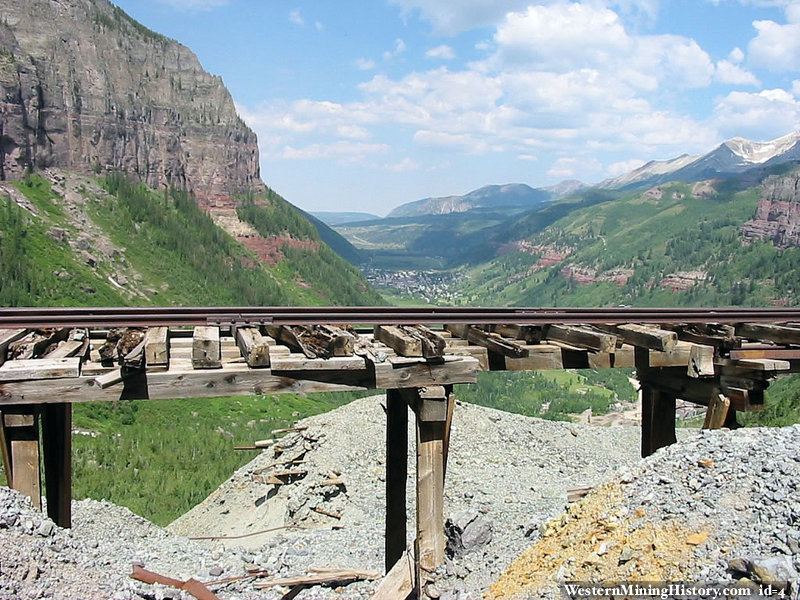
Just east of the Smuggler-Union Mine is the ghost town of Tomboy, named after the famous Tomboy Mine. At its peak, the company town of several hundred people had a school, YMCA, tennis courts, stores and stables. It was served by stage coach from Telluride daily. A few buildings remain standing and there are ruins of many more crushed by the heavy snows or disassembled for partial reuse by locals over the years.
The Alta ghost town is about 6 miles south of Telluride. Gold was discovered here in 1878 so there are some older relics around. Sadly the Alta mill burned in 1948 but a boarding house and several other dwellings remain including a striking three story miner’s dormitory.
The ghost town of Ophir is about 8 miles south of Telluride. The town was founded around 1877 and gained a post office in 1878, making it one of the oldest towns in the area. By 1898, Ophir was home to about 400 people and had electric lighting. Surviving early structures include the stamp mill, a hotel, a number of cabins (many still occupied) and, above town, the Ophir Loop. The loop is a dramatic feat of engineering - a 100 foot trestle bridge and 3 tiers of overlapping track, designed by Otto Mears.
A Tour of Colorado Mining Towns
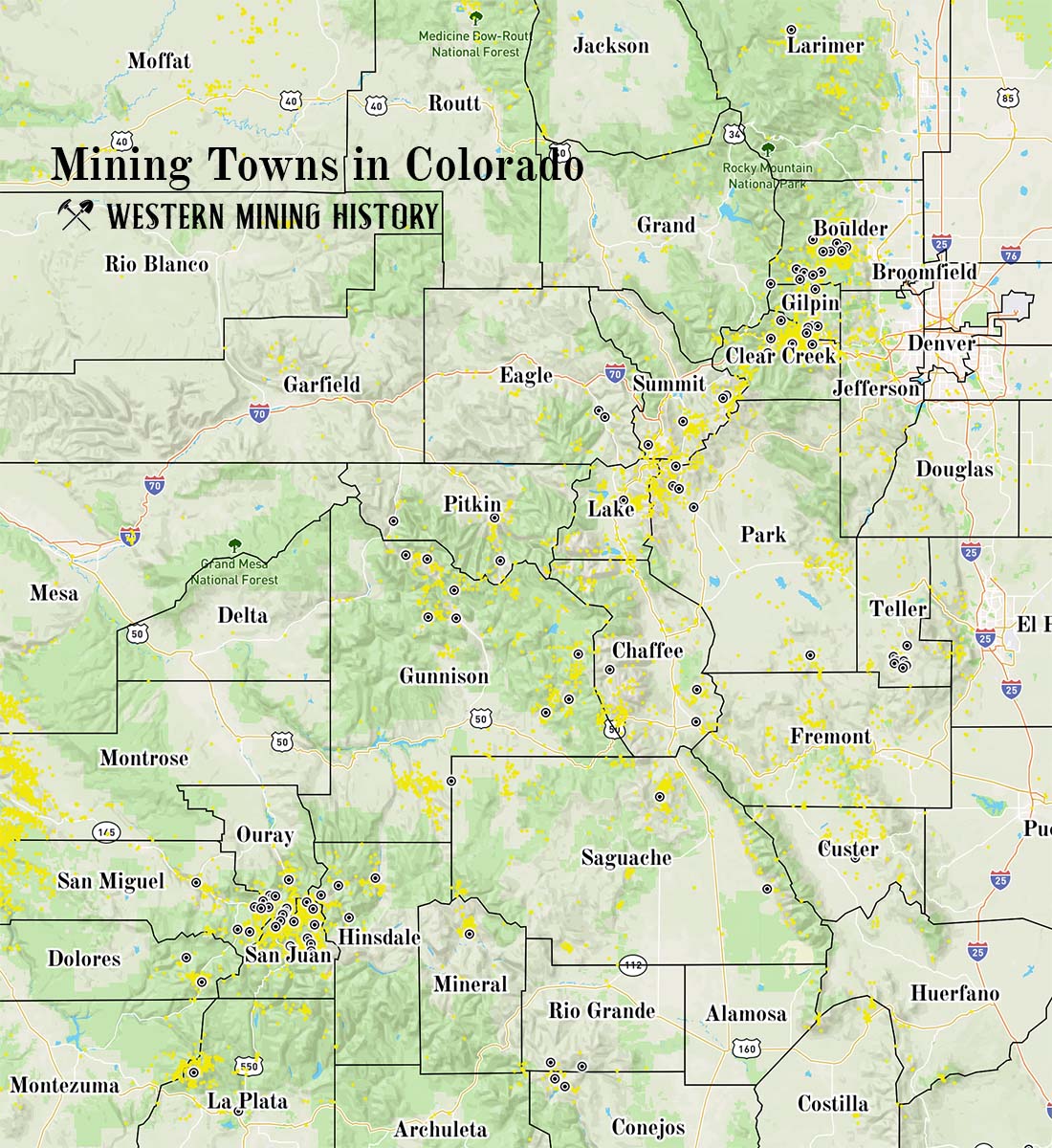
Explore over 100 Colorado mining towns: A tour of Colorado Mining Towns.
Colorado Mining Photos
More of Colorado's best historic mining photos: Incredible Photos of Colorado Mining Scenes.
